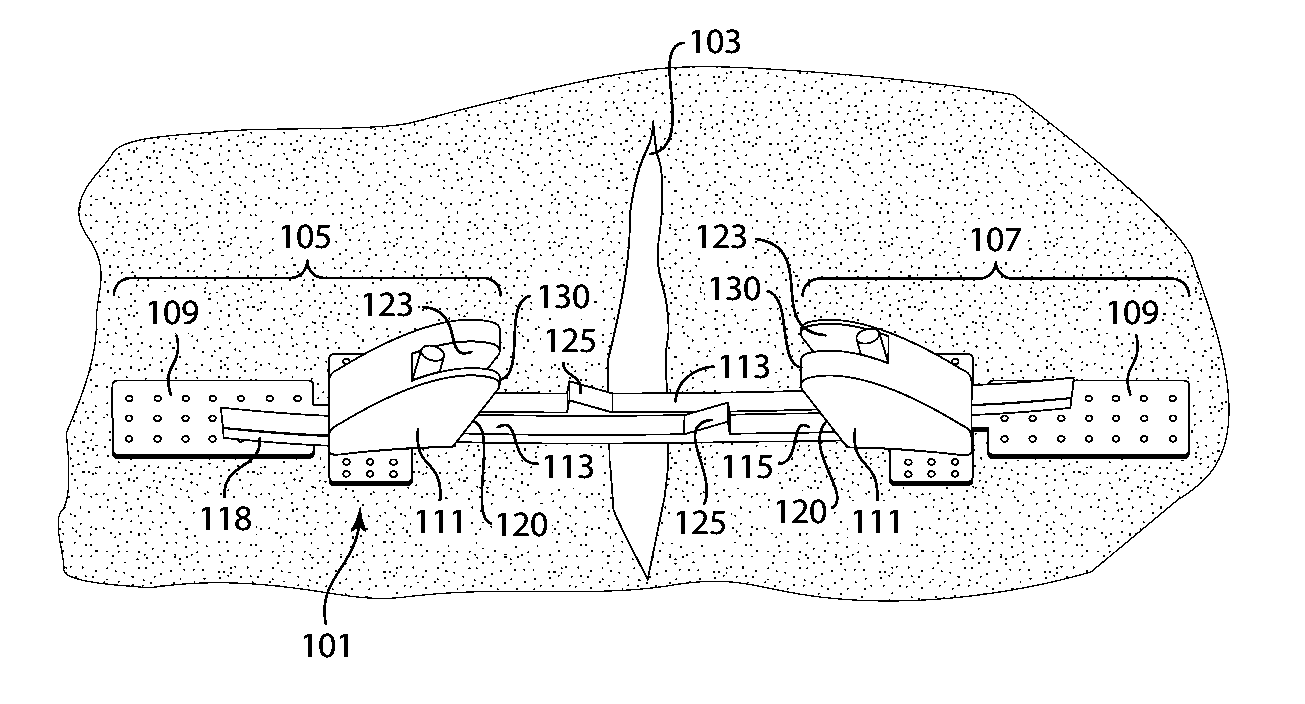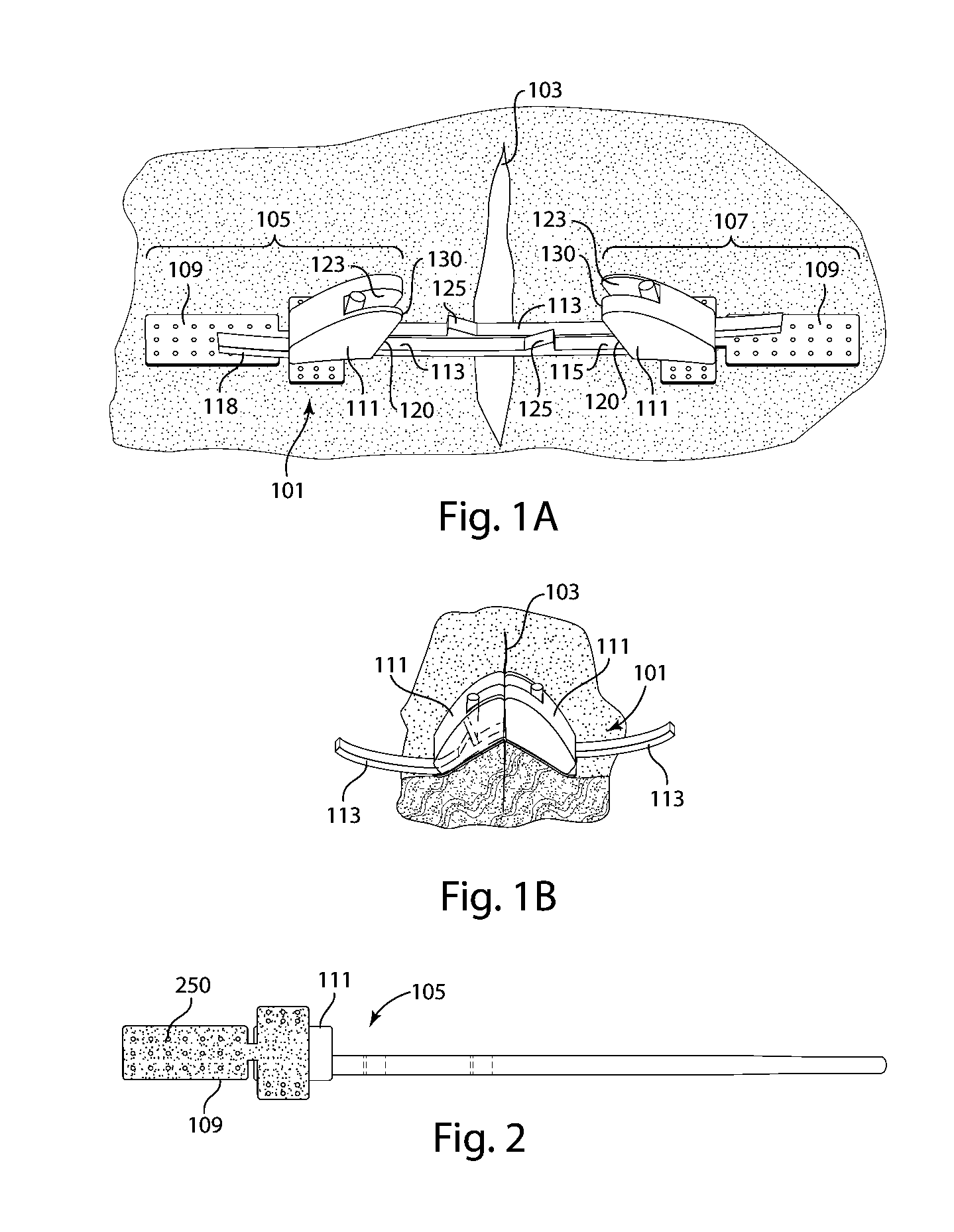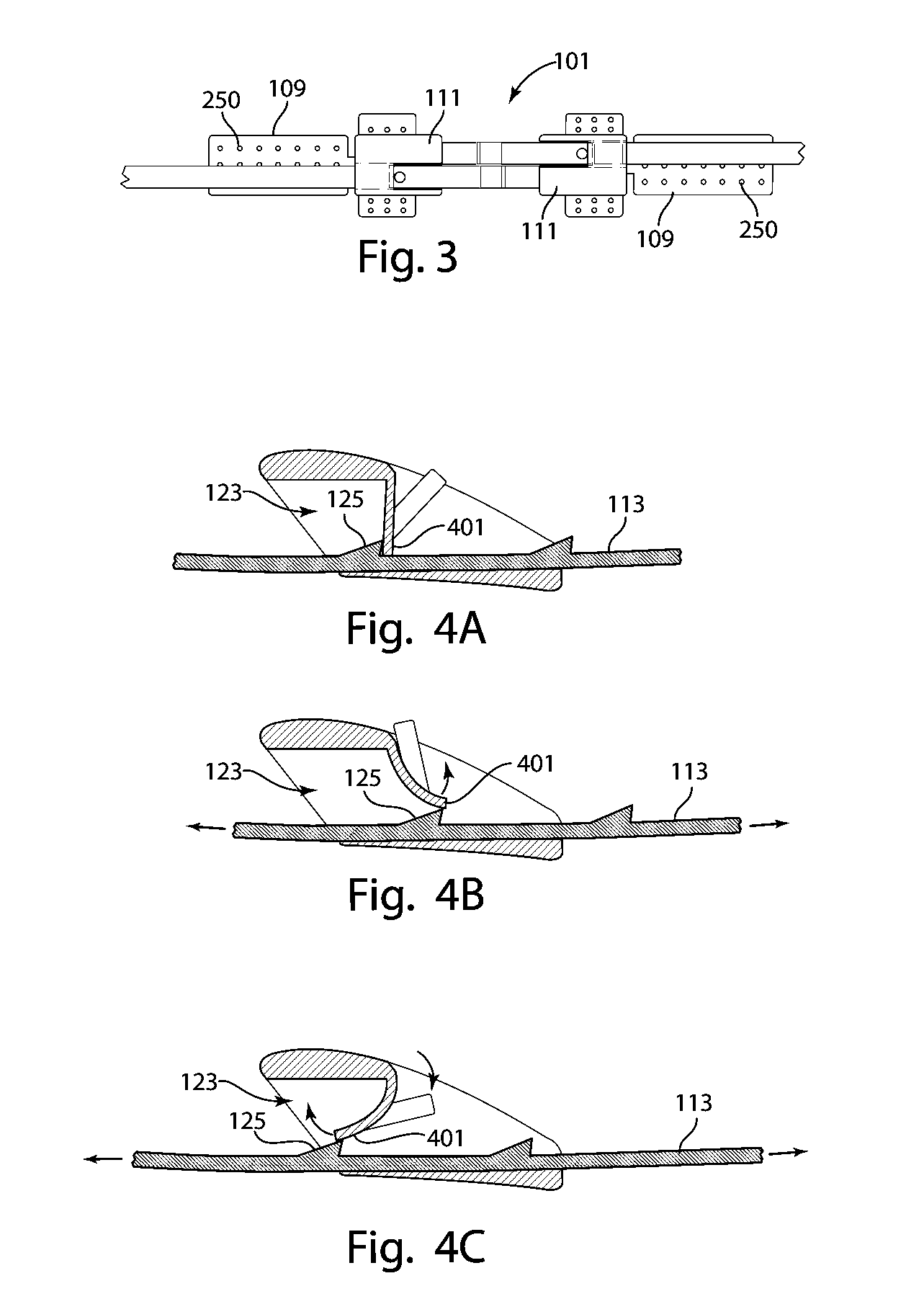Devices for Securely Closing Tissue Openings with Minimized Scarring
- Summary
- Abstract
- Description
- Claims
- Application Information
AI Technical Summary
Benefits of technology
Problems solved by technology
Method used
Image
Examples
Embodiment Construction
[0007]The invention is directed to devices, systems and methods for closing surgical incisions and non-surgical wounds that provide for improved wound care. In accordance with an embodiment of the invention, a tissue closure device for non-invasively closing a tissue opening includes an assembled pair of substantially identical closure components. Each component includes a tissue attachment base with an attachment mechanism on a first side thereof to affix the attachment base to the skin. A standoff assembly is mounted on a second side of the attachment base of each component. A toothed pull-tab, having first and second ends, is coupled to the attachment base of each component through the standoff assembly and defines a longitudinal axis. The standoff assembly has a forward face, to which the first end of the pull-tab is affixed, and an opposed rearward face, the forward face including a sloped portion that is sloped rearward as it approaches the attachment base. Each component furt...
PUM
 Login to View More
Login to View More Abstract
Description
Claims
Application Information
 Login to View More
Login to View More - R&D
- Intellectual Property
- Life Sciences
- Materials
- Tech Scout
- Unparalleled Data Quality
- Higher Quality Content
- 60% Fewer Hallucinations
Browse by: Latest US Patents, China's latest patents, Technical Efficacy Thesaurus, Application Domain, Technology Topic, Popular Technical Reports.
© 2025 PatSnap. All rights reserved.Legal|Privacy policy|Modern Slavery Act Transparency Statement|Sitemap|About US| Contact US: help@patsnap.com



